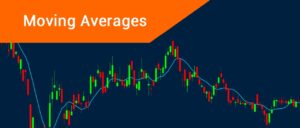The foreign exchange market, or forex for short, is a dynamic beast. Traders constantly seek new tools and techniques to navigate its ever-shifting currents. One such tool, often overlooked, is the geometric mean. While the arithmetic mean (average) reigns supreme in many analyses, the geometric mean offers a unique perspective on price movements, potentially aiding forex traders in their decision-making.
Delving into the Math: Geometric Mean vs. Arithmetic Mean
Before diving into forex applications, let’s establish the core difference between these two averages. The arithmetic mean, the familiar “average,” is calculated by summing a set of numbers and dividing by the number of elements. In forex, it could represent the average price of a currency pair over a specific period.
The geometric mean, however, takes a different approach. It multiplies all the values in a set and then takes the nth root of the product, where n is the number of elements. This method gives more weight to compounding effects, which are crucial in the world of finance.
Let’s illustrate this with a simple example. Imagine you track the EUR/USD exchange rate for three days:
- Day 1: 1.1000
- Day 2: 1.0800 (down 1.8%)
- Day 3: 1.1200 (up 3.7%)
The arithmetic mean would be (1.1000 + 1.0800 + 1.1200) / 3 = 1.1000. This suggests no net change. However, the geometric mean, calculated as the cube root of (1.1000 * 1.0800 * 1.1200), is approximately 1.0997. This value reflects a slight depreciation despite the seemingly positive closing price on Day 3.
The geometric mean emphasizes the impact of volatility. In our example, the larger price swing on Day 3 (up 3.7%) has a lesser influence on the geometric mean compared to the arithmetic mean. This is because the geometric mean considers the multiplicative effect of each price point.
The Geometric Mean in Forex Trading: Potential Applications
Understanding the core difference, let’s explore how the geometric mean can be applied in forex trading:
- Identifying Trend Strength:
The geometric mean, by giving less weight to extreme price movements, can potentially offer a smoother trend line compared to the arithmetic mean. This smoother line might help traders gauge the underlying strength of a trend by filtering out short-term noise. For instance, during a strong uptrend, the geometric mean might be consistently above the arithmetic mean, indicating a more robust upward bias.
- Calculating Average Returns:
Forex traders often track their performance by calculating average returns. While the arithmetic mean is commonly used, it can be skewed by large wins or losses. The geometric mean, on the other hand, provides a more compounding-adjusted view of average returns. This can be particularly valuable when evaluating long-term performance and comparing strategies.
- Building Custom Indicators:
The geometric mean can be incorporated into technical analysis tools to create custom indicators. For example, a trader might develop a geometric moving average (GMA), which calculates the geometric mean of closing prices over a specific period. This GMA could potentially act as a support or resistance level, similar to a traditional moving average, but with a potentially different sensitivity to volatility.
- Risk Management:
The geometric mean’s focus on compounding effects can be beneficial for risk management. By using the geometric mean of historical volatilities, traders can get a better sense of the average volatility experienced over time. This can help them set more realistic stop-loss levels and position sizes based on the inherent risk of the market.
Limitations and Considerations
While the geometric mean offers valuable insights, it’s crucial to acknowledge its limitations:
- Backward-Looking: Like most technical indicators, the geometric mean is based on past data. It doesn’t predict future price movements but rather helps analyze historical trends.
- Parameter Dependence: The effectiveness of the geometric mean, especially in custom indicators, can depend on the chosen parameters like the look-back period (for GMAs). Experimentation and backtesting are essential to find suitable settings for your trading style.
- Limited Popularity: Compared to the arithmetic mean, the geometric mean is less commonly used in forex trading platforms. Traders might need to develop custom tools or rely on advanced platforms that offer such functionalities.
Expanding Your Forex Toolkit
The geometric mean, though not a mainstream tool, offers a valuable alternative perspective for forex traders. Its focus on compounding effects and reduced sensitivity to volatility can provide insights that complement traditional technical analysis.
Let’s Manage Your Forex Funds With Fx Pips Guru!
Fx Pips Guru is a forex fund management company managing client’s funds based on equity size. Let’s do Live Chat with our experts.




